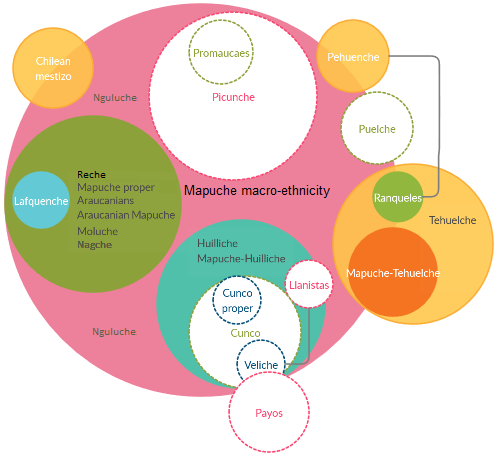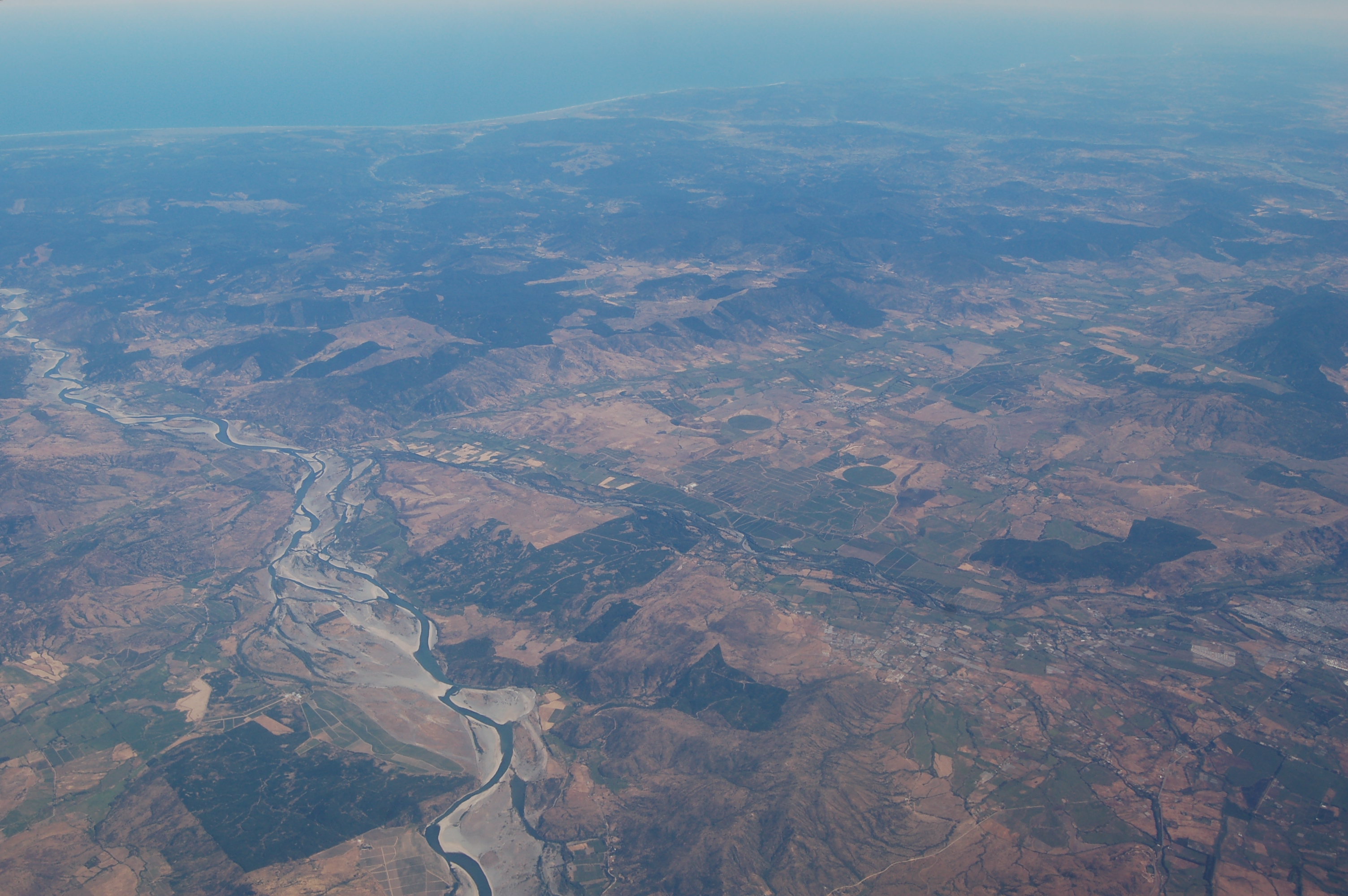|
Promaucae
Promaucae, also spelled as ''Promaucas'' or ''Purumaucas'' (from Quechua ''purum awqa'': wild enemy), were an indigenous pre-Columbian Mapuche tribal group that lived in the present territory of Chile, south of the Maipo River basin of Santiago, Chile and the Itata River. Those to the north were called ''Quillotanes'' and '' Mapochoes'' by the Spanish colonists). They spoke Mapudungun, like the Moluche to the south, and were part of the Picunche tribe that lived north of the Itata River. Description The Inca referred to all the peoples who were not under their empire as ''puruma auca''. Because these Picunche tribes were successful in defending their territory against the Inca Empire in the Battle of the Maule, they were given this distinctive name. In an effort to transliterate the word into Spanish phonetics, the Spanish referred to them as the ''Purumaucas'' or ''Promaucaes''. The early Spanish in the area knew their region as the province of Promaucae and its inhabitants we ... [...More Info...] [...Related Items...] OR: [Wikipedia] [Google] [Baidu] |
Battle Of The Maule
The Battle of the Maule (in Mapudungun: ''Mawlen Weichantun'', in Quechua: ''Mawlli Ch'iraqi'') was fought between a coalition of Mapuche people of Chile and the Inca Empire of Peru. Traditionally this battle is held to have occurred near what is now Maule River, in Central Chile. The account of Garcilaso de la Vega depicts the three-day battle, which is generally believed to have occurred in the reign of Tupac Inca Yupanqui (1471-93 CE). Historian Osvaldo Silva conjectures instead the battle occurred much after Tupac Inca Yupanqui's conquest of northern Chile with 1532 being a possible date. Silva claims the battle was not decisive at all as the Inca army was already in retreat from a new incursion to Mapuche lands in the south. Arguably the Inca's advances in Chile were halted by their unwillingness to commit greater resources in fighting the Mapuche. Account of Garcilaso de la Vega In a six-year campaign with an army that eventually rose to 50,000 men, the Inca general Sinchi ... [...More Info...] [...Related Items...] OR: [Wikipedia] [Google] [Baidu] |
Picunche
The Picunche (a Mapudungun word meaning "North People"), also referred to as ''picones'' by the Spanish, were a Mapudungun-speaking people living to the north of the Mapuches or Araucanians (a name given to those Mapuche living between the Itata and Toltén rivers) and south of the Choapa River and the Diaguitas. Until the Conquest of Chile the Itata was the natural limit between the Mapuche, located to the south, and Picunche, to the north. During the Inca attempt to conquer Chile the southern Picunche peoples that successfully resisted them were later known as the Promaucaes. The Picunche living north of the Promaucaes were called ''Quillotanes'' (those living in the Aconcagua River valley north to the Choapa) and '' Mapochoes'' (those living in the Maipo River basin) by the Spanish, and were part of the Inca Empire at the time when the first Spaniards arrived in Chile. Among the peoples the Spanish called the Promaucaes, the people of the Rapel River valley were particu ... [...More Info...] [...Related Items...] OR: [Wikipedia] [Google] [Baidu] |
Mapochoes
The Picunche (a Mapudungun word meaning "North People"), also referred to as ''picones'' by the Spanish, were a Mapudungun-speaking people living to the north of the Mapuches or Araucanians (a name given to those Mapuche living between the Itata and Toltén rivers) and south of the Choapa River and the Diaguitas. Until the Conquest of Chile the Itata was the natural limit between the Mapuche, located to the south, and Picunche, to the north. During the Inca attempt to conquer Chile the southern Picunche peoples that successfully resisted them were later known as the Promaucaes. The Picunche living north of the Promaucaes were called ''Quillotanes'' (those living in the Aconcagua River valley north to the Choapa) and '' Mapochoes'' (those living in the Maipo River basin) by the Spanish, and were part of the Inca Empire at the time when the first Spaniards arrived in Chile. Among the peoples the Spanish called the Promaucaes, the people of the Rapel River valley were par ... [...More Info...] [...Related Items...] OR: [Wikipedia] [Google] [Baidu] |
Mapuche
The Mapuche ( (Mapuche & Spanish: )) are a group of indigenous inhabitants of south-central Chile and southwestern Argentina, including parts of Patagonia. The collective term refers to a wide-ranging ethnicity composed of various groups who shared a common social, religious, and economic structure, as well as a common linguistic heritage as Mapudungun speakers. Their habitat once extended from Aconcagua Valley to Chiloé Archipelago and later spread eastward to Puelmapu, a land comprising part of the Argentine pampa and Patagonia. Today the collective group makes up over 80% of the indigenous peoples in Chile, and about 9% of the total Chilean population. The Mapuche are particularly concentrated in the Araucanía region. Many have migrated from rural areas to the cities of Santiago and Buenos Aires for economic opportunities. The Mapuche traditional economy is based on agriculture; their traditional social organization consists of extended families, under the direction ... [...More Info...] [...Related Items...] OR: [Wikipedia] [Google] [Baidu] |
Cauquenes
Cauquenes, a city and commune in Chile, is the capital of the Cauquenes Province and is located in the Maule Region. History According to the historical records of Alonso de Ercilla, Cauquenes was originally inhabited by an indigenous community of the Promaucaes, known as the ''Cauqui'' by the Inca or ''cauquenes''Juan Ignacio Molina, Compendio de la historia civil del reyno de Chile, pg. 9. by the Spanish and that gave their name to Cauquenes River. They lived to the south of the Maule River and north of the Itata River and owned a settlement in the place where the city lies today. The city of Cauquenes was founded on May 9, 1742, de "Villa of Nuestra Señora de las Mercedes de José de Manso del Tutuvén", in the land located between the rivers Tutuvén and Cauquenes, that the Promaucae ''cacique'' (chieftain) Ascensio Galdámez and his wife Micaela de Araya donated to the Kingdom of Spain. Cauquenes' founder was the then Governor of the Kingdom of Chile, José Antonio Mans ... [...More Info...] [...Related Items...] OR: [Wikipedia] [Google] [Baidu] |
Santiago, Chile
Santiago (, ; ), also known as Santiago de Chile, is the capital and largest city of Chile as well as one of the largest cities in the Americas. It is the center of Chile's most densely populated region, the Santiago Metropolitan Region, whose total population is 8 million which is nearly 40% of the country's population, of which more than 6 million live in the city's continuous urban area. The city is entirely in the country's central valley. Most of the city lies between above mean sea level. Founded in 1541 by the Spanish conquistador Pedro de Valdivia, Santiago has been the capital city of Chile since colonial times. The city has a downtown core of 19th-century neoclassical architecture and winding side-streets, dotted by art deco, neo-gothic, and other styles. Santiago's cityscape is shaped by several stand-alone hills and the fast-flowing Mapocho River, lined by parks such as Parque Forestal and Balmaceda Park. The Andes Mountains can be seen from most points i ... [...More Info...] [...Related Items...] OR: [Wikipedia] [Google] [Baidu] |
Quechua Languages
Quechua (, ; ), usually called ("people's language") in Quechuan languages, is an indigenous language family spoken by the Quechua peoples, primarily living in the Peruvian Andes. Derived from a common ancestral language, it is the most widely spoken pre-Columbian language family of the Americas, with an estimated 8–10 million speakers as of 2004.Adelaar 2004, pp. 167–168, 255. Approximately 25% (7.7 million) of Peruvians speak a Quechuan language. It is perhaps most widely known for being the main language family of the Inca Empire. The Spanish encouraged its use until the Peruvian struggle for independence of the 1780s. As a result, Quechua variants are still widely spoken today, being the co-official language of many regions and the second most spoken language family in Peru. History Quechua had already expanded across wide ranges of the central Andes long before the expansion of the Inca Empire. The Inca were one among many peoples in present-day Peru who already sp ... [...More Info...] [...Related Items...] OR: [Wikipedia] [Google] [Baidu] |
Huayna Cápac
Huayna Capac (with many alternative transliterations; 1464/1468–1524) was the third Sapan Inka of the Inca Empire, born in Tumipampa sixth of the Hanan dynasty, and eleventh of the Inca civilization. Subjects commonly approached Sapa Inkas adding epithets and titles when addressing them, such as Wayna Qhapaq Inka Sapa'lla Tukuy Llaqt'a Uya "Unique Sovereign Wayna Qhapaq Listener to All Peoples". His original name was Titu Kusi Wallpa. He was the successor to Tupaq Inka Yupanki.Sarmiento de Gamboa, Pedro, 2015, Originally published in Spanish in 1572, History of the Incas, Lexington, Background and family ''Names are in Quechua, which does not have a written form, so the same name may appear with many different spellings.''The exact place and date of Wayna Qhapaq's birth are unknown. Though he was raised in Cusco, he may have been born in 1468 in Tumebamba (modern Cuenca) and have spent part of his childhood there. He was the son of Thupaq Inka (ruled 1471–1493) who ha ... [...More Info...] [...Related Items...] OR: [Wikipedia] [Google] [Baidu] |
Rapel River
Rapel River is a river of Chile located in the O'Higgins Region. It begins at the confluence of the rivers Cachapoal and Tinguiririca in an area best known as ''La Junta''. At present day, this area is impounded by Rapel Dam, creating Rapel Lake. Other tributaries: * Estero Alhué * Claro de Rengo River(Cachapoal) * Claro River(Tinguiririca) * Estero Zamorano * Estero La Cadena * Estero Carén * Estero Coya * Estero Chimbarongo * Pangal River See also *List of rivers of Chile This list of rivers of Chile includes all the major rivers of Chile. See each article for their tributaries, drainage areas, etc. Usually significant tributaries appear in this list, under the river into which they drain. Rivers by name Following ... References External links Rapel River Map Rivers of O'Higgins Region Rivers of Chile {{Chile-river-stub ... [...More Info...] [...Related Items...] OR: [Wikipedia] [Google] [Baidu] |
Mataquito River
Mataquito is a river located in the Curicó Province, Province of Curicó, Maule Region of Chile and formed by the union of rivers Teno River, Teno and Lontué River, Lontué about 10 kilometers west of Curicó near the locality of Sagrada Familia, Chile, Sagrada Familia and empties into the Pacific Ocean south of the town of Iloca (Chile), Iloca, Licantén. Sources Cuenca del río Mataquito Rivers of Maule Region Rivers of Chile {{Chile-river-stub ... [...More Info...] [...Related Items...] OR: [Wikipedia] [Google] [Baidu] |
Maule River
The Maule river or Río Maule ( Mapudungun: ''rainy'') is one of the most important rivers of Chile. It is inextricably linked to the country's pre-Hispanic ( Inca) times, the country's conquest, colonial period, wars of Independence, modern history, agriculture (wine, traditional crops), culture (literature, poetry, folklore), religion, economy and politics. The Maule River marked the southern limits of the Inca Empire. Many famous men and women in Chile's history have been born in the Region named after the river. The river has also lent its name to one of the viticultural regions of the country (also known as appellations), the Valley of Maule, a subregion of the Central Valley. Upper reach The river is 240 km long and its basin covers around 20,600 km2. Thirty percent of the basin is located in the Andean range. It is born in Laguna del Maule in Talca Province, at an altitude of 2,200 mt in the vicinity of the border with Argentina. From that point the river ... [...More Info...] [...Related Items...] OR: [Wikipedia] [Google] [Baidu] |
-lámina_1.jpg)


.png)
